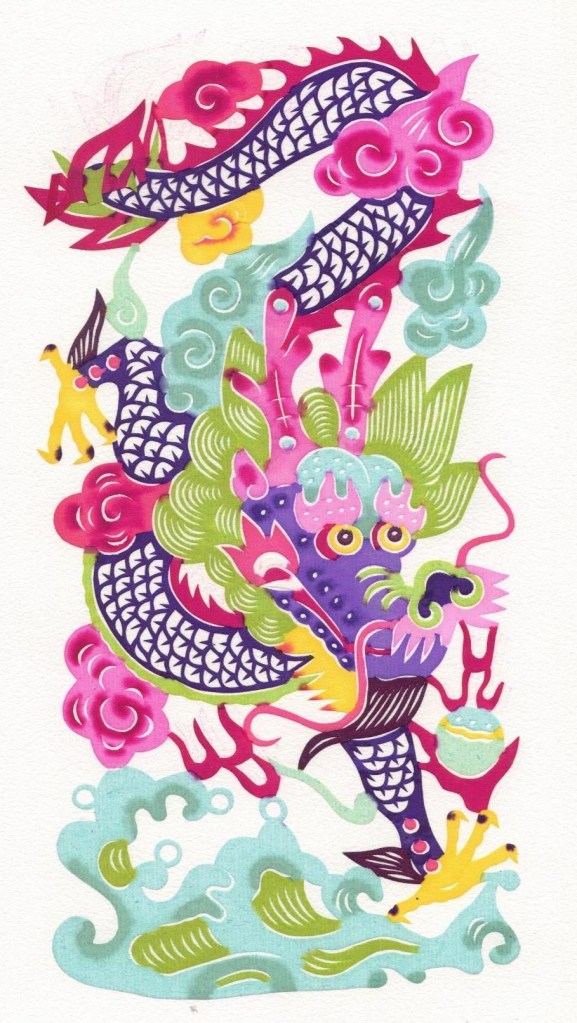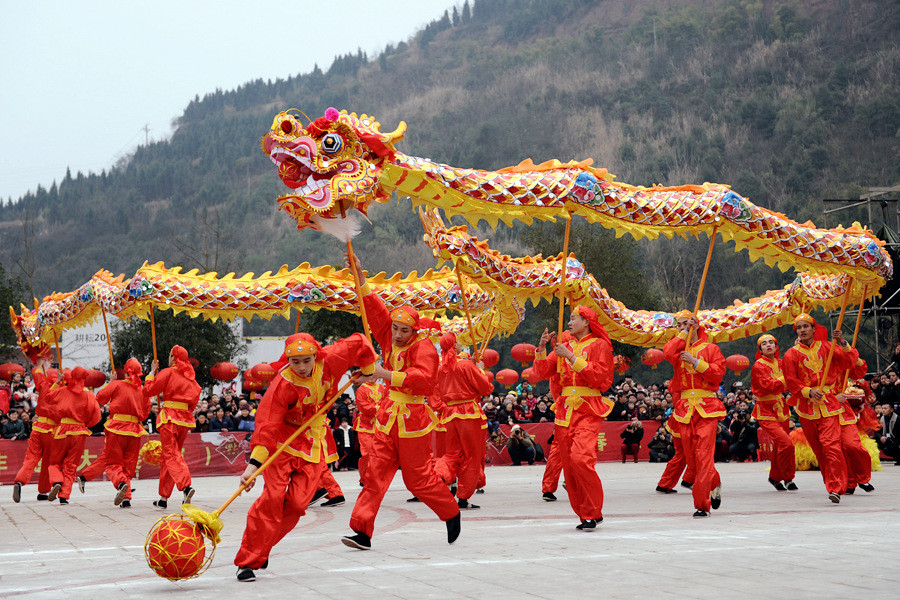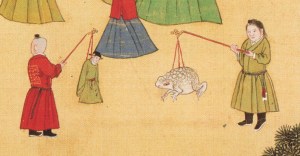
The Dragon is the fifth of the 12-year cycle of animals which appear in the Chinese zodiac. The Year of the Dragon (龍) starts on February 10, 2024 .
The Chinese dragon (龍) is a legendary creature in Chinese folklore and mythology. It is a complex creature containing a combination of features of various animals such as the head of a camel, the horns of a deer, the eyes of a rabbit, the ears of a cow, the neck and the long body of a snake, the scales of a carp, the claws of a hawk, the palms of a tiger. They traditionally symbolize potent and auspicious powers. They are believed to have the ability to bring rain and control bodies of water.
Historically, the Chinese dragon was associated with the Emperor of China and used as a symbol to represent imperial power. Statues and images of dragons can be found nearly everywhere in the Beijing Forbidden City (紫禁城).

Nine-Dragon Wall (九龍壁) in Beijing Forbidden City

Massive marble paving stones with carved dragons leading to the Palace of the Hall of Preserving Harmony (保和殿)

The Dragon Throne of the Emperor of China in the Palace of Heavenly Purity (乾清宮).
Ornaments with dragon designs



Paintings of the dragons

Dragon Dance
Dragon dance (舞龍) is often performed during the Chinese New Year. The dance is performed by a team of experienced dancers who manipulate a long flexible giant puppet of a dragon using poles positioned at regular intervals along the length of the dragon. It is believed dragon dance can bring good luck to people.

Please click the following link for more information :
Animal – The Year of the Dragon (龍年) – Patrick Siu Chinese Calligraphy & Landscape Painting 蕭燿漢談書畫
I wish my readers a blessed and delightful Year of the Dragon,
Patrick







